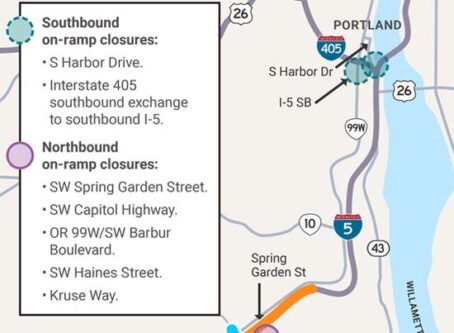Driverless future a long way off
“Without drivers to pay, to carry, or to protect, autonomous vehicles will be much less expensive to produce than conventional delivery vehicles.”
That’s from a recent report by KPMG, a worldwide accounting firm. The report is titled “Autonomy Delivers: An Oncoming Revolution in the Movement of Goods” by Gary Silbert, KPMG’s national automotive leader – whatever that title means.
Of course driverless vehicles will be cheaper to produce. As Gary points out, they won’t need driver seats, steering wheels, windshields, or the physical space drivers would take up.
But protecting the driver? In fact, the driver does the protecting, of the vehicle and whatever it’s carrying – not with a gun or a black belt but simply by being there.
I guess Gary doesn’t understand that. It isn’t the only thing he doesn’t understand about freight in the real world – especially in crowded cities. Are there similar misunderstandings about driverless truckloads? Probably. I’ll come back to that.
According to Gary, these incredible “last mile” delivery vehicles will revolutionize everything, especially in urban areas he calls “islands.” There will be driverless vans, driverless carts, driverless roller skates, and driverless drones to bring whatever you need as soon as you need it. We’re talking about everything from refrigerators to cough drops.
Most of Gary’s predictions are typical sci-fi stuff applied to logistics. The big misconception is the report’s conclusion: “The revolution is coming,” Gary says. “It’s time to prepare.”
Prepare? How? That would be like preparing for life on Mars. Sure, the revolution is coming. So are anti-gravity shoes, though anti-gravity shoes are easier to imagine than Gary’s “last mile” world.
The study assumes all these home deliveries will offset individual trips to stores by car. It also predicts the cost of such deliveries will fall until they are virtually free. So why would you drive to your nearby Amazon Market when you can order whatever you need as you need it? Why crowd your shelf space? That grocery bag of 10 items in your car could turn into 10 individual deliveries to your door.
Oh yeah. Those deliveries. You probably never made city deliveries – peddled freight as we used to call it. If you did, you know the problem is not the last mile. It’s the last 20 yards – 200 yards if you have to double-park a block away. Fate throws up other, incredibly creative obstacles, such as police activity, snarling dogs, or wet cement. Robot foiled by a dog? Depending on the size of the robot and mood of the dog, you bet.
How about the “last couple of feet”? Does the vehicle have to physically link with a receiving device? Does a separate robot ring your bell, UPS style? Does a loudspeaker summon the consignee to come get his or her stuff? How long does the vehicle wait? Or does the vehicle simply launch packages at your doorstep? You might not want to order eggs.
With the possible exception of defined routes, pre-approved receivers, and special physical accommodations on the street, this will not work on Gary’s “islands” – Chicago and Los Angeles-San Diego, for example. For any benefit to the general public, entire cities will have to be re-engineered, maybe even bulldozed and rebuilt to accommodate a colossal swarm of delivery vehicles. Hell, according to authorities in New York, a growing number of quick-delivery vehicles clog some Manhattan streets already.
Thing is, Gary and many autonomous trucking enthusiasts are getting ahead of themselves. In this case, way ahead.
True, truckload linehaul is simpler. There are fewer potential obstacles to automation. But if you’ve been on the road any length of time, you know there will be obstacles. There always are. crashes, storms, construction, weaving road-ragers, big potholes, equipment failures, and more. That’s why the folks who want to put autonomous trucks on the road keep testing, testing, and testing. They’re trying to anticipate everything.
But they can’t.
For example, how will the public react to driverless trucks? What ways will crooks find to take advantage of trucks without drivers? How will fun seekers play with the highly sensitive, always-yielding big trucks?
Yes, we will see autonomous trucks in experimental linehaul segments in the not-too-distant future. But widespread deployment of driverless trucks – on the highway or in the city – is farther off than studies like this one would lead you to believe.









